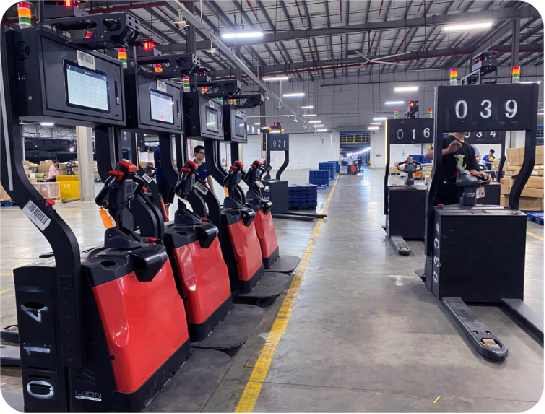Para motoristas e mecânicos que dependem de veículos em ambientes exigentes-de carros de corrida a caminhões pesados-o compartimento do motor é um lugar hostil: temperatures can soar to 120°C+, vibrations rattle components, and oil or coolant splatters are common. In this chaos, an Engine Monitor Touch Screen is a critical tool, displaying real-time data like oil pressure, coolant temperature, and RPM to prevent breakdowns. But standard touch screens fail here—they overheat, glitch, or short out when exposed to extreme heat. This is where high-temp Engine Monitor Touch Screens excel: built to withstand the engine bay’s harsh conditions, they deliver reliable performance when it matters most. This guide will break down what makes these screens heat-resistant, how they enhance engine monitoring, and how to choose the right one—helping you keep engines running smoothly, even in extreme heat.

Key Features of High-Temp Engine Monitor Touch Screens
These screens are engineered to survive where standard displays fail—here’s what sets them apart:
1. Extreme Temperature Resistance
- Operating range: High-temp Engine Monitor Touch Screens function reliably in -40°C to 150°C (-40°F to 302°F), far exceeding standard car screens (which typically max out at 70°C). This handles engine bay heat from running engines, hot climates, or even nearby exhaust components.
- Heat-resistant materials: The screen’s housing uses heat-stable plastics (por exemplo., PEEK or polyimide) that don’t melt or warp. Internal components like capacitors and circuit boards are rated for high temperatures, preventing performance drops or shutdowns.
- Thermal management: Some models include heat sinks or passive cooling fins to dissipate excess heat, ensuring the screen stays functional even during prolonged engine operation.
2. Durability Against Engine Bay Hazards
- Resistência química: The screen’s surface and housing resist damage from oil, refrigerante, gasoline, and cleaning solvents—critical for accidental spills or splatters in the engine bay.
- Vibration and shock tolerance: Engine vibrations can loosen connections or damage internal parts. These screens meet MIL-STD-810H standards, with reinforced mounting and shock-absorbing gaskets to withstand constant shaking.
- Dust and water protection: An IP6K9K rating ensures the screen is dust-tight and can handle high-pressure water jets (for cleaning engine bays without damaging the display).
3. Engine-Specific Monitoring Capabilities
Beyond durability, they’re designed to display critical engine data clearly:
- Real-time metrics: Track oil pressure, coolant temperature, exhaust gas temperature (EGT), fuel pressure, and RPM—all in high-contrast, easy-to-read fonts that remain visible in bright engine bays.
- Alert systems: Customizable warnings (por exemplo., “Low oil pressure” or “Overheating”) with visual and audible alerts, so you catch issues before they cause engine failure.
- Data logging: Some screens record historical data (por exemplo., temperature spikes or pressure drops) for later analysis—useful for diagnosing intermittent problems or optimizing engine performance.
How to Choose a High-Temp Engine Monitor Touch Screen
Selecting the right screen depends on your vehicle type and monitoring needs—follow these steps:
1. Match to Your Vehicle and Engine Type
- Race cars and performance vehicles: Prioritize high refresh rates (to track fast-changing RPM or EGT) and compact sizes (for tight engine bays).
- Heavy-duty trucks and commercial vehicles: Focus on large screens (10+ polegadas) for easy reading from the driver’s seat and compatibility with multiple sensors (por exemplo., for diesel engine diagnostics).
- Off-road vehicles: Choose screens with extra vibration resistance and chemical protection (to handle mud, água, and oil exposure).
2. Check Sensor Compatibility
- Ensure the screen works with your engine’s sensors (por exemplo., thermocouples for EGT, pressure transducers for oil pressure). Most high-temp screens support standard sensor types (0-5V, 4-20mA) but may need adapters for specialized sensors.
- Look for expandability: Screens with multiple input ports let you add more sensors later (por exemplo., a fuel flow sensor) without replacing the entire system.
3. Evaluate Usability in Extreme Conditions
- Visibility: The screen should have high brightness (1000+ lêndeas) and anti-glare glass to counteract sunlight in open engine bays.
- Touch functionality with gloves: Mechanics often wear heat-resistant gloves—choose a screen with resistive or enhanced capacitive touch that works through thick gloves.
- Mounting flexibility: Opt for adjustable mounts (por exemplo., swivel brackets) to position the screen where it’s visible but out of the way of hot components or moving parts.
Installation and Maintenance Tips for Longevity
Proper setup and care ensure your Engine Monitor Touch Screen lasts in harsh conditions:
1. Installation Best Practices
- Avoid direct heat sources: Mount the screen at least 6 inches away from exhaust manifolds, turbochargers, or other components that exceed 150°C. Use heat shields if needed.
- Secure wiring: Use heat-resistant wire looms (rated for 200°C+) to protect cables from heat and abrasion. Secure wires with metal clips to prevent them from getting caught in moving parts.
- Professional calibration: After installation, calibrate the screen to your sensors (por exemplo., set EGT alert thresholds) to ensure accurate readings and alerts.
2. Routine Maintenance
- Clean with care: Wipe the screen with a dry microfiber cloth to remove oil or dust. For stubborn grime, use isopropyl alcohol (70%)—avoid water or harsh chemicals that can damage seals.
- Inspect connections: Monthly, check that sensor wires and power cables are tight and free from corrosion (common in high-heat environments).
- Update firmware: If your screen has smart features, update its software regularly to improve sensor compatibility and fix bugs.
FAQs About High-Temp Engine Monitor Touch Screens
1º trimestre: Can a high-temp Engine Monitor Touch Screen replace my car’s factory gauges?
A1: Yes—many drivers replace analog gauges with these screens for a cleaner look and more data. They can display all critical metrics in one place, reducing clutter in the engine bay or dashboard.
2º trimestre: How long do these screens last in high-heat environments?
A2: With proper installation and maintenance, they typically last 5–7 years. Heat-resistant components and materials are designed to withstand thousands of hours of exposure to 120°C+ temperatures.
3º trimestre: Will the screen still work if it gets splashed with oil or coolant?
A3: Yes—thanks to IP6K9K ratings and chemical-resistant materials, occasional splatters won’t damage the screen. Just clean it promptly to avoid residue buildup that could affect touch sensitivity.
4º trimestre: Can I install the screen myself, ou eu preciso de um profissional?
A4: Basic installation (mounting the screen and connecting to standard sensors) is possible for DIYers with electrical experience. For complex setups (por exemplo., integrating with diesel engine computers or custom sensors), hire a professional familiar with high-temp systems.
A high-temp Engine Monitor Touch Screen is a lifeline for vehicles operating in extreme conditions, providing reliable engine data even when temperatures soar. By prioritizing heat resistance, durabilidade, and engine-specific features, you can choose a screen that helps prevent breakdowns and keeps your vehicle running at its best.
If you’re unsure which high-temp Engine Monitor Touch Screen fits your vehicle (por exemplo., need help with sensor compatibility for a race car, want to confirm heat ratings for a truck engine bay), Preencha o formulário em nosso site. Our automotive tech experts will analyze your engine type, operating environment, and monitoring needs to recommend a tailored solution—helping you monitor your engine with confidence, no matter how hot it gets.



